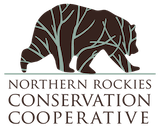The following keynote speakers bring a wide range of experience and perspective. In each video, the speaker answers questions on the essential coexistence challenges between humans and wildlife. They provide context, history and clarify what’s at stake. The goal of these videos is to create a moment of reflection: a chance to take stock of where we’re at in the GYE—as a physical place, an ecosystem concept, and a story in the evolving relationship of societies and nature.
Douglas W. Smith
Douglas W. Smith is a Senior Wildlife Biologist at Yellowstone National Park. In 1994 he was hired as a biologist for the Yellowstone Gray Wolf Restoration Project. From 1997 onward, Douglas has been the project leader. Douglas also runs the park’s programs on bird, elk, and beaver populations. Prior to Yellowstone, he worked on Isle Royale National Park with wolves from 1979 to 1992. Most recently, Douglas and co-authors published a review of the reintroduction of wolves in Yellowstone on it’s 25th year anniversary, titled, Yellowstone Wolves: Science and Discovery in the World’s First National Park. Douglas holds an M.S. on beaver physiology from Michigan Tech and a PhD on beaver ecology from the University of Nevada, Reno.
Jason Baldes
Jason Baldes is the Tribal Buffalo Program Manager at the National Wildlife Federation and a member of the Eastern Shoshone Tribe from the Wind River Reservation. Jason has worked in wildlife management for over 20 years, and for many of those, has worked to restore bison to the Wind River Reservation. Jason seeks to connect the cultural and ecological significance of buffalo and is currently developing a curriculum around environmental science and indigenous biodiversity practices. Jason has a Master’s degree in Land Resources and Environmental Science from Montana State University and is currently, an adjunct instructor at Central Wyoming College.
Rebecca Watters
Rebecca Watters is the executive director of the Wolverine Foundation, the founder of the Mongolian Wolverine Project, the Conservation Outreach Coordinator at the Center for Large Landscape Conservation. Rebecca has worked in Mongolia for over 20 years, studying the ecology of wolverines, and integrating traditional and Western approaches to conservation. As a wildlife biologist and social scientist, she seeks to make connections between wildlife, culture and human rights. Her current work focuses on climate and community resiliency. Rebecca holds a Master’s degree from the Yale School of the Environment and has been a Research Associate with NRCC since 2008.
Franz Camenzind
Franz Camenzind has lived in Jackson, WY for over 50 years. During this span, he has become one of Jackson’s leading voices for conservation, through his writing, advocacy, filmmaking, and research. He began his career as an independent environmental consultant after receiving a PhD in Zoology from the University of Wyoming, studying the ecology and behavior of coyotes. From there, he spent many years as a filmmaker, producing films on a long list of species. Franz spent 13 years as the Executive Director for the Jackson Hole Conservation Alliance, where he led the alliance to some of their significant achievements. He was one of the founding members of the Greater Yellowstone Coalition, and continues to serve on boards across the GYE.
Katie Shepherd Christiansen
Katie Shepherd Christiansen is an artist, naturalist, and conservationist. Her wildlife illustrations and nature writings appear in books, exhibits, and on natural area interpretive resources across the country. Katie’s work in conservation spans science, policy, management, communications, grassroots organizing, community building, and education. Katie is also the Artist-in-Residence here at NRCC and editor and illustrator of the book The Artist’s Field Guide to Yellowstone. She holds a master’s degree from Yale’s School of the Environment. Her collaborators have included the National Endowment for the Arts, Trust for Public Land, National Geographic, the WILD Foundation, and AMB West Ranches.
Gary Tabor
Gary Tabor is the founder and president of the Center for Large Landscape Conservation based in Bozeman, MT. He draws on over 30 years of experience in Africa, South America, Australia and Canada to promote landscape scale conservation efforts grounded in science and practice. Gary has been involved with the establishment of protected areas, organizing collaborative management strategies, promoting landscape connectivity, and raising awareness of human-wildlife disease spillover. Gary has three academic affiliations and serves as Chair of IUCN World Commission on Protected Areas’ Connectivity Conservation Specialist Group. Gary holds a V.M.D. in Wildlife Veterinary Medicine from the University of Pennsylvania.
